Table of contents
Styrian pumpkin seed oil is traditionally made from roasted seeds of the Styrian oil pumpkin ( Cucurbita pepo var. styriaca ). However, pumpkin seed oil is also made fromunroasted seeds. The "green gold", which is also called pumpkin oil or kernel oil , gives many dishes a special touch with its nutty taste.
Use in the kitchen:
Pumpkin seed oil is ideal as a dressing for raw vegetables and salads of all kinds. The aromatic, nutty-tasting oil also refines many other dishes such as soups, casseroles, risotto and pasta. With its sweet taste, it is even suitable for special desserts such as ice cream, parfaits, pudding and cakes. As an aperitif or snack in between meals: Pumpkin seed oil goes perfectly in creamy spreads on bread and rolls or in dips with fresh vegetable sticks.
Although the seeds are usually roasted before the oil is made, pumpkin seed oil (from roasted and unroasted pumpkin seeds) is one of the heat-sensitive oils. When heated above 100 °C, pumpkin seed oil loses its greenish color, its aromatic taste, some of its healthy ingredients and, what's more, unhealthy bitter substances can even develop. Pumpkin seed oil should therefore not be used for cooking, roasting or deep-frying.
Vegan recipe for root vegetable carpaccio with pumpkin seed oil dressing:
Ingredients: 1 beetroot , 1/2 radish , 1 red onion , 2 (purple) carrots (Puple Haze), 4 tbsp vegan sour cream , 1 tbsp apple cider vinegar , 2 tbsp pumpkin seed oil, salt , herbs, some black olives .
Preparation: Wash the root vegetables well and slice them very finely with a vegetable slicer. Arrange the sliced vegetables nicely on a plate. For the dressing, stir all the ingredients until smooth and add a dollop to the vegetables and garnish with black olives.
Vegan recipe for pumpkin seed pesto with pumpkin seed oil:
This pumpkin seed pesto is quick and easy to prepare and can also be made a few days in advance.
| Not only vegans or vegetarians should read this: Vegans often eat unhealthily. Avoidable nutritional mistakes . |
Purchasing - where to buy?
The most well-known and very high-quality pumpkin seed oil comes from the Austrian region of Styria. Styrian pumpkin seed oil is often referred to as the original, as the Styrian oil pumpkin ( Cucurbita pepo var. styriaca ) comes from this region. Nowadays, oil from oil pumpkins is also extracted in other regions and countries, but often in inferior quality. Styrian pumpkin seed oil is geographically protected and its name is abbreviated to PGI (protected geographical indication).
Traditional Styrian pumpkin seed oil consists of roasted pumpkin seeds; the oil itself is no longer heated. A more intensive roasting influences the taste and color of the oil. Pure Styrian pumpkin seed oil can be recognized by the names: "seed oil", "pumpkin seed oil", "farmer's seed oil" or "Styrian pumpkin seed oil" in combination with "real" or "100%". 1 Good pumpkin seed oil has a rather thick consistency and smells pleasantly nutty, sweet with a typically aromatic flavor. The color ranges from dark green to reddish brown depending on the degree of roasting.
Real Styrian pumpkin seed oil can occasionally be found in supermarket chains such as Coop , Migros , Denner , Volg , Spar , Aldi , Lidl , Rewe , Edeka or Hofer and in organic supermarkets such as Denns or Alnatura . Blends with other cooking oils should be labelled salad oil, cooking oil or table oil with the percentage of pumpkin seed oil. However, consumer confusion is a constant. Products sold as "real pumpkin seed oil" often contain diluted pumpkin seed oil. Externally, these diluted oils are almost indistinguishable from real pumpkin seed oil. 1 The consistency of the mixed version is a little thinner, the colour is not as intense and a "greasy" taste indicates an inferior product. The consumer , an Austrian test magazine, found pesticide residues in foreign, diluted pumpkin seed oil from discounters. This even included the insecticide DDT, which is banned in Europe and the USA. 2
If possible, buy pumpkin seed oil in organic quality. This is best found in health food stores, organic shops, drugstores - or you can order it online from a trustworthy supplier or directly from the producer.
Pumpkin seed oil made from unroasted pumpkin seeds is also organically produced and is usually available online. It should be noted that the product cannot be called "Styrian pumpkin seed oil", even if it comes from this region. 3 The color of the unroasted oil is greenish-yellow, which is significantly lighter than the roasted, greenish-brown pumpkin seed oil.
Storage:
How long can you keep pumpkin seed oil? If stored in a cool (below 20°C) and dark place, the oil will last for a good 12 months in a sealed bottle. Used bottles are best kept in the fridge. These should be used within 2-3 months, as the oil begins to oxidize due to oxygen and loses its vitamins and aroma. Pumpkin seed oil that smells rancid should definitely be thrown away. Look for bottles made of dark glass. This provides better protection against light.
Production:
Pumpkin seed oil is usually pressed from the seeds of the Styrian oil pumpkin ( Cucurbita pepo var. styriaca ). Around 1,000pumpkin seeds are obtained from one oil pumpkin. Traditionally, the seeds are washed and dried and then ground to make pumpkin seed flour. To extract the oil from the dry flour, the ground seeds are mixed with water and salt . This separates the protein and fat. The water it contains is allowed to evaporate through slow roasting. The so-called oil cake is then pressed mechanically or hydraulically to obtain the pumpkin seed oil. This is neither cold pressing nor hot pressing. The oil is not actively heated during the pressing process; instead, the ground raw material is roasted at a maximum of 120 °C before pressing. This is also the smoke point of pumpkin seed oil; above this temperature, trans fats are formed. 1 In comparison: Sunflower and linseed oil have their smoke point at about 107 °C, cold-pressed rapeseed oil at 130 °C and refined oil at 200 °C.
Industrial pumpkin oil is made from chopped and roasted pumpkin seeds and pressed while still warm and under high pressure using a hydraulic press. It is difficult to verify what temperatures are reached here.
The Codex Alimentarius Austriacus defines cold-pressed oils as follows: Cold-pressed oils are unrefined oils that are obtained without the addition of heat using only mechanical processes . They are not degummed, (partially) deacidified, bleached, deodorized and/or fractionated [...]. Decanting, filtering and/or centrifuging are common methods for removing the turbidity. Filtration is carried out using paper or fabric filters or other inert filter aids . Pre- and post-treatment processes such as roasting the raw material and/or washing or steaming the oil are possible and are indicated by appropriate information [...] .4
Cold-pressed oils (laws, raw food)
In Switzerland, oil is referred to as cold-pressed oil if the oilseed was not heated, the pressing temperature did not exceed 50 °C and no problematic post-treatment took place.
According to the Federal Department of Home Affairs ( FDHA ), an edible oil is considered to be cold-pressed (or may be described with synonyms such as (extra) virgin, unrefined, cold-pressed or natural) if it is obtained by pressing or centrifuging from previously unheated raw materials, the temperature during pressing did not exceed 50 °C and there was no refining, i.e. no neutralisation, no treatment with adsorbents, bleaching earth and no steaming .
An oil may be described as “gently steamed” if the refining process was limited to steaming and did not exceed 130 °C . 18
In the EU and the USA, there does not appear to be a generally applicable temperature limit set by law for cold-pressed oils. For example, the guidelines for edible fats and oils of the Federal Ministry of Food and Agriculture (D) are similar to the EDI regulation, but they do not specify a permissible maximum temperature for general cold pressing - since they only apply to products whose labelling and composition are not conclusively set by law (i.e. not for olive oil, cocoa butter, milk fats, spreadable fats). 19
On the other hand, both the EU directives and the amendment to the EDI regulation on foods of plant origin, mushrooms and table salt (and its amendment) provide for a special rule for the labelling of olive oils . 20,21
These are selective marketing rules in which the term raw food is not defined. "Raw food" and "raw" are therefore not state-protected terms (as is the case with the term "organic"), which leaves a lot of room for interpretation. Although it is agreed that with purely mechanical cold pressing, the pressing temperatures generally do not exceed 40 °C, one should not naively assume that cooking oils are raw food quality. There is a suspicion that the measuring method used does not indicate the temperature in the press cylinder (where the heat is highest), but only the outlet temperature in the oil hose. With water-cooled olive oil presses (so-called "water-cooled 37°" oil presses), one probably cannot even say with certainty what the actual heat is inside the press cylinder, because the entire press cylinder is surrounded by cooling sleeves.
In addition, the pressing pressure and speed as well as the moisture content of the oilseed affect the pressing temperature. If, for example, the moisture content is too low, the temperature rises during pressing and it is difficult to stay even below the maximum limit of 50 °C. 22
In the Codex Alimentarius mentioned above, you can also find the definition of pumpkin seed oil production (with an error in the Latin species name!): Pumpkin seeds, the seeds of the common field pumpkin Curcurbita pepo L., etc., produce a green-yellow oil when peeled and pressed . However, if these seeds are roasted before pressing, a darker, yellowish-brownish to dark green-reddish oil is produced. The pumpkin seed oil produced in Austria, especially in Styria, is mainly obtained from the shellless seeds of the Styrian oil pumpkin (Curcurbita pepo styriaca). These are roasted before pressing. The resulting characteristics result in a dark-colored, dichroic oil that appears dark green-reddish in the light passing through it. Only selected and carefully treated pumpkin seeds are used for pressing. 4
Ingredients - nutritional value - calories:
Pumpkin seed oil has a high content of polyunsaturated fatty acids. In addition to the antioxidant alpha and beta tocopherol ( vitamin E ), the oil also contains selenium and the carotenoids lutein and zeaxanthin. Vitamin K and other secondary plant ingredients such as phytosterols, beta sitosterol and delta-7 sterols are also present. 5,6
The characteristic green, red fluorescent color of pumpkin seed oil comes from the shell pigments in the oil: chlorophyll a and b and pheophytin (chlorophyll molecule without central Mg ion). 7,8
Does pumpkin seed oil contain omega-3? Pumpkin seed oil contains very few omega-3 fatty acids, at 0.48 g/100g. The ratio between the inflammation-promoting omega-6 fatty acids (LA), of which the western diet contains far too much, and the anti-inflammatory omega-3 fatty acids (ALA) is alarmingly high (102 LA:1 ALA). In pumpkin seeds, the ratio is as high as 180:1. According to the Federal Office of Public Health ( FOPH ), the average value should not exceed 5:1. This disease-promoting property of pumpkin seed oil is of course not found in advertising; studies are also almost only carried out in areas where the aim is to promote the sale of the oil.
The Erb-Müesli, for example, can correct this. In the ingredients list, look for the option "Sorting by health values" to be able to select healthy ingredients or corrective ingredients. The same applies to the recipes, e.g. with sorting by LA:ALA ratio.
You can find all the ingredients, the coverage of the daily requirement and comparison values with other ingredients in our nutrient tables. In the article Nutrients explained you will get a detailed insight into the topic.
Health aspects - effects:
What is pumpkin seed oil good for? The high content of polyunsaturated fatty acids has a vasodilating effect, can lower blood pressure and thus help prevent cardiovascular problems. The high proportion of phytosterols is said to have a cholesterol-lowering effect.
Dangers - intolerances - side effects:
Unfortunately, pumpkin seeds and pumpkin seed oil have a very poor ratio between the two essential fatty acids linoleic acid (LA, pro-inflammatory) and alpha-linolenic acid (ALA, anti-inflammatory). 5 The ratio is 102:1. See the ingredient tables below and the link in the box above. You would have to enrich dishes with either linseed, walnuts or macadamia nuts to compensate for this deficiency.
Use as a medicinal plant:
It has long been known in naturopathy that pumpkin seeds have a positive effect on prostate problems. Medicine is now also familiar with this and there are prostate medications that derive their active ingredients from pumpkin seeds. Studies have so far shown a positive effect of pumpkin seeds on the urinary tract, bladder and especially on the prostate. 9,10
For a long time, researchers assumed that the fat-soluble substances contained in pumpkin seed oil had a positive effect on the bladder and prostate. Only more recent research has shown that the water-soluble lignans (secondary plant substances similar to estrogens) have a regulating effect on bladder function. However, lignans are found in high concentrations in the aqueous extract of pumpkin seeds and are hardly contained in pumpkin seed oil. According to the latest scientific findings, pumpkin seed oil appears to be only partially effective in the case of an enlarged prostate and stress incontinence due to the lack of lignans. In contrast, studies conducted by the Taiwanese National Cheng Kung University in 2006 demonstrated the healing power of pumpkin seed oil for an enlarged prostate, albeit only in an animal experiment. 11
High-quality pumpkin seed oil is considered to be the cooking oil with the highest antioxidant content. Therefore, it not only prevents cancer, but also many heart, circulatory and lung diseases. An interesting study comes from the University of Graz : Here, research was carried out into the health benefits of Styrian pumpkin seed oil in connection with the fight against free radicals. According to this study, pumpkin seed oil is said to be an effective antagonist of free radicals and thus prevent the development of arteriosclerosis. 12
A study by the University of the West Indies in Kingston, Jamaica, examined pumpkin seed oil for its potential benefits for women-specific complaints. In the postmenopausal subjects, a blood pressure-lowering effect was observed and increased "good" HDL cholesterol levels were found, which keep cholesterol metabolism in balance. However, the treatment with 2 g of pumpkin seed oil daily was only carried out for 12 days. 13
According to a recent study from 2014, pumpkin seed oil could be an effective remedy for genetically caused hair loss. 76 Korean participants were given 400 mg of pumpkin seed oil daily for six months. Hair density increased by up to 40%. The researchers suspect that this effect is due to a lower DHT content in the (male) hormone levels. The beta-sitosterol contained in pumpkin seed oil inhibits an enzyme that converts the male hormone T. into DHT. 14
Pumpkin seed oil is also said to help against intestinal worms. 15
Pumpkin seed oil has a variety of health-promoting properties. Nevertheless, we think it is an exaggeration to call the oil a superfood, especially because of the unfavorable ratio of polyunsaturated fatty acids.
Occurrence - Origin:
The original form of the domesticated garden pumpkin, Cucurbita pepo , dates back to the inhabitants of the caves of Guilá Naquitz in the province of Oaxaca (not Oxaca), Mexico, around 10,000 years ago. Other finds come from Tikal (2000 BC to 850 AD) and Peru (3000 BC). The musk pumpkin was domesticated in Central America and the giant pumpkin in South America. In the 19th century, cultivation is documented in India, Java, Angola and Japan.
The history of pumpkin seed oil began in 1735. At that time, it was still made from thick-shelled seeds. The cultivation of the naked-shelled variety used today spread in Styria between 1870 and 1880. Until the 1970s, pumpkin seed oil was only known in southern Styria within Austria. It was not until the 1980s that it began to spread to kitchens around the world.
Today, the oil pumpkin is grown in the traditional area of southern Styria, southern Burgenland (and the neighboring areas in Hungary and Slovenia) and in Russia.
Pumpkin cultivation generally ranges from hot, dry areas to cool cloud forests. However, most species grow in hot lowland areas with distinct rainy and dry seasons. Pumpkins require high levels of sunlight and are sensitive to frost.
Cultivation - Harvest:
Information on pumpkin cultivation and the pumpkin season can be found under the ingredient Pumpkin, raw .
Animal protection – species protection – animal welfare:
According to Wikipedia , mainly bees, especially the bee genera Peponapis and Xenoglossa , as well as other pollen and nectar collecting insects visit the flowers of the genus Cucurbita that bloom during the day. 17
General information:
The Styrian oil pumpkin ( Cucurbita pepo var. styriaca ) is descended from the garden pumpkin ( Cucurbita pepo ) and belongs to the pumpkin family (Cucurbitaceae). This variety is used almost exclusively for oil production. Due to a mutation that the oil pumpkin experienced over 100 years ago, it no longer forms hard-shelled seeds. The pumpkin seeds of the Cucurbita pepo var. styriaca only have a very thin skin. This makes it easier to extract the valuable pumpkin seed oil in larger quantities. 16
For more information about pumpkin, see the ingredients: Hokkaido pumpkin , butternut squash , summer squash and pumpkin, raw .
Alternative names:
Alternative names for pumpkin seed oil are pumpkin oil, kernel oil, farmers' kernel oil or Styrian pumpkin seed oil.
The English name is pumpkin seed oil.
Keywords for use:
The pressed oil cake (press cake, oil cheese) is a high-quality, protein-rich feed for cattle and pig fattening. 16
Use in cosmetics:
Is pumpkin seed oil good for the skin? Pumpkin seed oil is often used as a carrier oil in cosmetics because it contains many active ingredients such as vitamin E and carotenoids, which have good skin-care properties. Pumpkin seed oil is said to help with dry skin, the formation of wrinkles and fine lines, skin aging, stretch marks and flaky and cracked skin.
Literature - Sources:
Bibliography - 17 Sources
| 1. | Kuerbiskernoel.cc Ist steirisches Kürbiskernöl kaltgepresst? |
| 2. | Kosument.at Kürbiskernöl. |
| 3. | Kuerbiskern-oel.info Arten. |
| 4. | Lebensmittelbuch.at Speisefette, Speiseöle, Streichfette und andere Fetterzeugnisse. |
| 5. | USDA United States Department of Agriculture. |
| 6. | Procida G, et al. Chemical composition and functional characterisation of commercial pumpkin seed oil. J Sci Food Agric. 2013 Mar 30;93(5):1035-4. |
| 7. | Kreft S, Kreft M. Physicochemical and Physiological Basis of Dichromatic Colour. Naturwissenschaften. 94(11). 2007. doi:10.1007/s00114-007-0272-9. |
| 8. | Kaernbach C, Dörre C. On the color of transparent substances. B. Gula, O. Vitouch u. a.: Perspektiven psychologischer Forschung in Österreich. Pabst. 2006. |
| 9. | Terado T. et al. Clinical Study of mixed processed foods containing pumpkin seed extract and soybean germ extract on pollakiuria in night in elderly men; J Med Pharm Sci 2004; 52(4). |
| 10. | Yanagisawa E. et al. Study of Effektiveness of Mixed Processed Food Containing Cucurbita Pepo Seed Extract and Soybean Seed Extract on Stress Urinary Incontinence in Women; J Med Pharm Sci 2003; 14(3); S. 313-322. |
| 11. | Tsai YS et al. Pumpkin seed oil and phytosterol-F can block "T" in prazosininduced prostategrowth in rats. Urol Int. 2006;77(3):269-74. |
| 12. | Hermetter A, Zenzmaier E. Biol.Wirk.Kürbis-Kernöl - Biologische Wirkungen des steirischen Kürbiskernöls im Zusammenhang mit Herz-Kreislauferkrankungen. TU Graz, Institut für Biochemie. 2008. |
| 13. | Gossel W, et al. Improvement in HDL cholesterol in postmenopausal women supplemented with pumpkin seed oil: pilot study. Climacteric. 2011 Oct;14(5):558-64. |
| 14. | Young HC, et al. Effect of Pumpkin Seed Oil on "Hairgrowth" in Men with Androgenetic Alopecia: A Randomized, Double-Blind, Placebo-Controlled Trial. Evid Based Complement Alternat Med. 2014; PubMed. |
| 15. | Pahlow M. Das grosse Buch der Heilpflanzen. Nikol Verlag: Hamburg. 2013. |
| 16. | Wikipedia Kürbiskernöl. |
| 17. | Wikipedia Kürbisgewächse. |

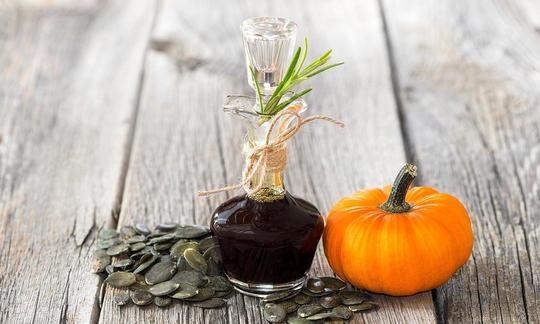

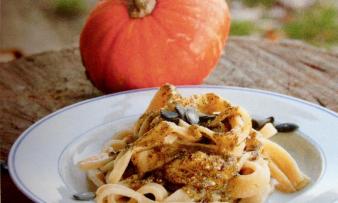
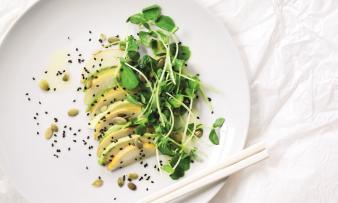
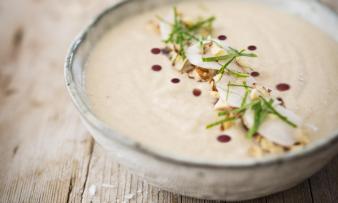


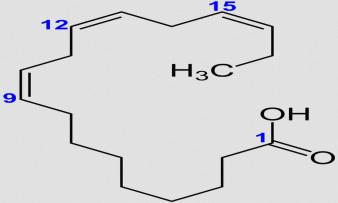


Comments